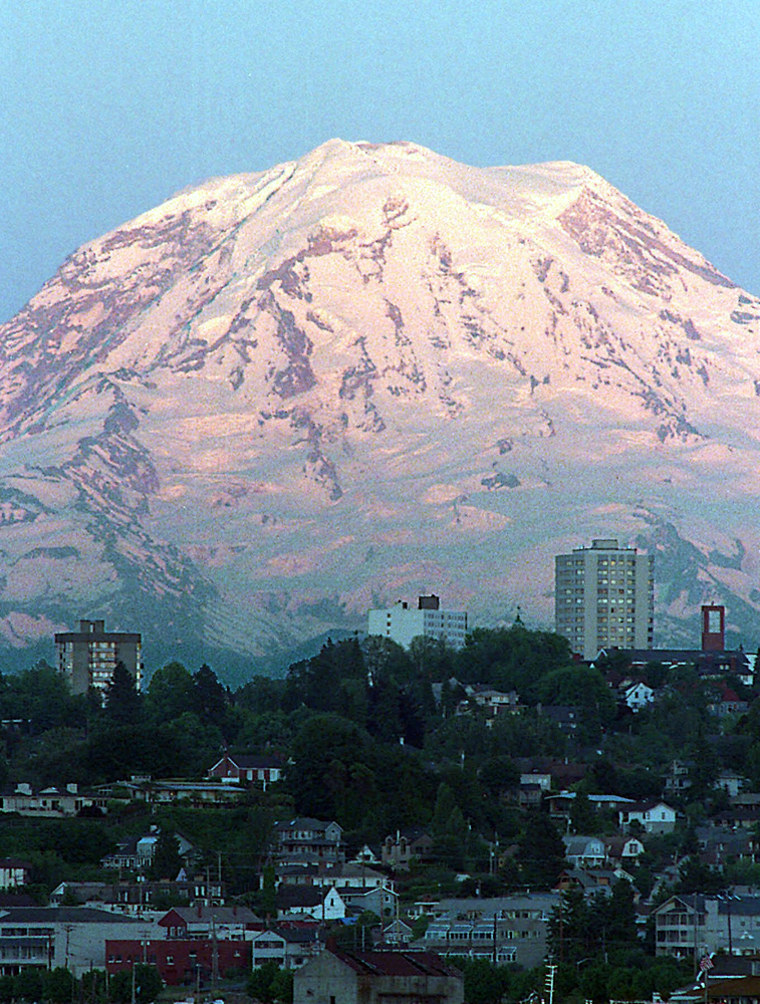Mount Rainier was shaken by its biggest earthquake in 30 years, but scientists said Tuesday that the increased seismic activity does not signal an eruption of the volcano.
The magnitude-3.2 quake was not related to recent rumblings at Mount St. Helens -- Rainier's sister volcano 50 miles to the south in the Cascade range.
Still, the Rainier quake is considered significant because it struck only one mile below the surface of its volcanic crater, said Bill Steele, coordinator of the Pacific Northwest Seismograph Network at the University of Washington.
"Directly under the volcano, that's a significant size. It's the largest single earthquake in the past 30 years" -- since scientific records have been kept, Steele said.
Steele said quake activity at Rainier has increased over normal levels in recent weeks. Five quakes greater than magnitude 2.0 were recorded Oct. 25-31, and the latest quake was one of a cluster of 17 or 18 temblors over a period of several hours Sunday.
But Mount Rainier calmed down Monday and has been "blessedly quiet" since, he said.
Scientists are watching for continuing earthquakes near the volcano's surface and a particular type of seismic activity that results from fluid moving through rocks. Those clues might signal an eruption, Steele said.
Despite Mount St. Helens' notoriety, Rainier is considered the most hazardous of all Cascade Range volcanoes because it is closer to more populated communities, Steele said.
Mount St. Helens rumbled back to life Sept. 23, with shuddering seismic activity that peaked above magnitude 3 as hot magma broke through rocks in its path. Molten rock reached the surface Oct. 11, marking resumption of dome-building activity that had stopped in 1986.
St. Helens continued Tuesday to build its lava dome, with molten rock reaching the surface at the rate of about one large dump-truck load per second.
A more explosive eruption, possibly dropping ash within a 10-mile radius of the crater, is possible at any time, scientists have said.
